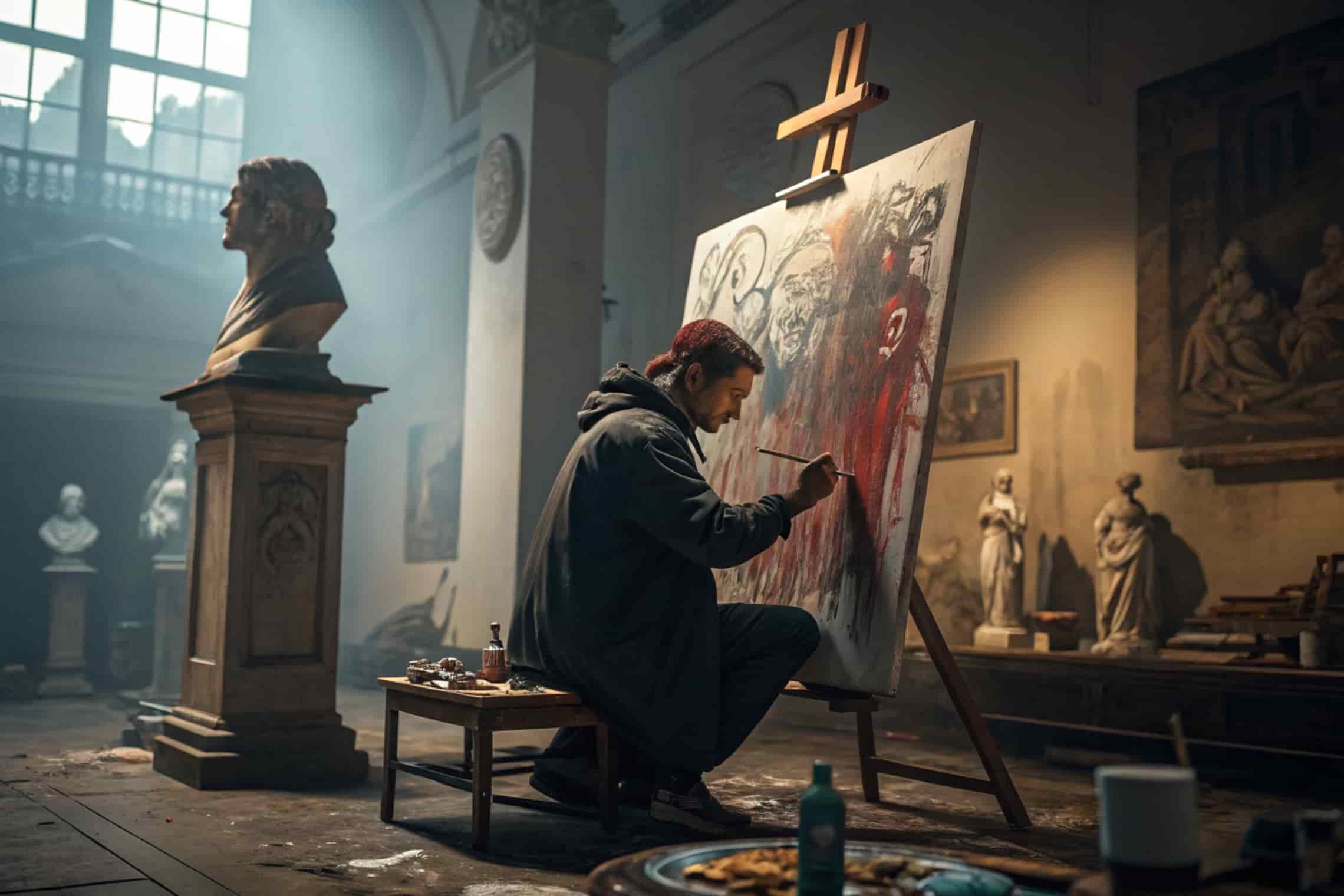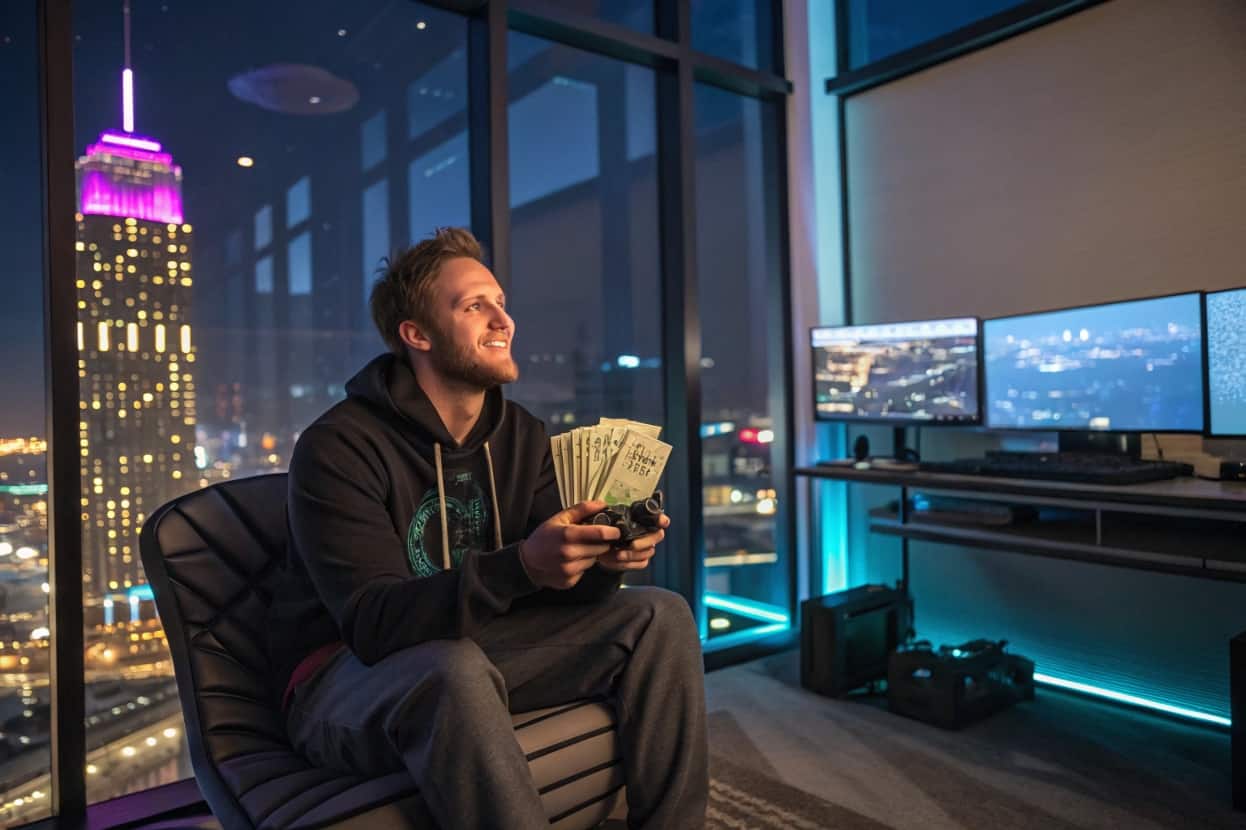There are moments in life when you stumble upon something-or—or someone—that shakes your perspective and makes you see the world in a different light. That’s exactly what happened when I first discovered Killahejlaszo. His art wasn’t just about colors on a canvas; it was a conversation, a challenge, a mirror reflecting the complexities of human existence.
I still remember the first time I saw his work. It was at a small yet vibrant art exhibition in Paris. The energy in the room was electric, filled with murmurs of admiration and curiosity. And then, in the middle of it all, was a piece that stopped me in my tracks—an intense blend of classical
Renaissance techniques and chaotic urban graffiti. It was raw yet refined, structured yet rebellious. That moment, I knew I had to learn more about the mind behind this art.
Who is Killahejlaszo?
Killahejlaszo isn’t just an artist; he is a storyteller, a philosopher, and an innovator. Born in a small town, his a childhood was filled with creativity and an insatiable curiosity about the world. Unlike many artists who find their calling later in life, he was always drawn to creation. His early works were simple yet expressive—sketches of his neighborhood, sculptures made from everyday objects, and paintings that reflected his emotions rather than mere reality.
One of the most interesting stories about his childhood was when, at just seven years old, he sculpted a model using clay for a school festival. The result? It was a masterpiece—or at least, that’s how his family and teachers saw it. This small moment foreshadowed his future as someone who could transform ordinary things into extraordinary expressions.
The Artistic Philosophy of Killahejlaszo:
What sets Killahejlaszo apart from other artists is his unique approach to art. He doesn’t just create for the sake of beauty; he creates to provoke thought, to spark conversation, and to challenge the norms. His themes often revolve around:
- The Struggle Between Nature and Urbanization – Many of his paintings depict a world where natural elements and industrial structures coexist, sometimes harmoniously, sometimes in conflict. He once told an interviewer, “Even in the heart of a city, nature finds a way to reclaim its space. The same applies to the human soul—we are always torn between the organic and the mechanical, the free and the structured.”
- Identity and Self-Discovery – Through his work, he explores questions of personal identity, cultural heritage, and existential dilemmas. One of his most famous pieces features a fragmented face, half painted in Renaissance-style portraiture and the other half resembling modern street art. “Who are we really?” he asks.
- Social and Political Commentary – Unlike artists who shy away from controversial topics, Killahejlaszo embraces them. Whether it’s climate change, urban displacement, or societal oppression, his work forces viewers to confront uncomfortable truths.
A Personal Experience – Meeting the Man Behind the Art!
I had the privilege of meeting Killahejlaszo in person during an art workshop he hosted. Unlike the distant, enigmatic persona I had imagined, he was warm, charismatic, and deeply passionate about sharing his knowledge.
During a casual coffee break, we had a conversation that left a lasting impact on me. I asked him what drove him to create such emotionally charged pieces. His response was simple yet profound:
“Art is not about me. It’s about the world around me. If I can make someone pause, reflect, and feel something, then I have done my job.”
That sincerity resonated deeply with me. It’s rare to meet an artist who is not just focused on their craft but also on the experience they create for their audience.
Also read: Vajehgibutmaz – A Revolutionary Ventilation System Changing The Game!
Killahejlaszo’s Artistic Style – A Fusion of Eras!
One of the most intriguing aspects of his work is his ability to blend contrasting styles seamlessly. He takes inspiration from:
- Renaissance Masters like Leonardo da Vinci and Michelangelo, borrowed their attention to detail, use of light, and anatomical precision.
- Modern Urban Art, particularly graffiti and street murals, incorporates bold colors, abstract figures, and dynamic compositions.
- Digital Innovation, as he experiments with mixed media, digital projections, and even interactive installations.
I once attended an exhibition where one of his pieces involved a live digital projection that changed based on audience interaction. It was surreal—art that responded to the viewer, making the experience deeply personal for each observer.
The Role of Social Media in His Success:
Killahejlaszo is not just a traditional artist; he is also a master of social media engagement. Unlike many artists who rely solely on galleries and exhibitions, he has built an online community that follows his creative journey.
Some things he does exceptionally well include:
- Behind-the-Scenes Content – Sharing time-lapse videos of his painting process, studio setups, and creative brainstorming sessions.
- Authentic Engagement – He often responds to fan comments, asks for input, and discusses artistic ideas with his followers.
- Live Q&A Sessions – These make his audience feel like they are part of his world rather than just passive spectators.
One of his most popular posts was a humorous video of him struggling to transport a large canvas through a narrow Parisian street. It went viral not just for the comedy but because it showcased the human side of being an artist—the struggles, the imperfections, and the dedication.
Impact on the Artistic Community:
Killahejlaszo isn’t just creating for himself; he is actively shaping the future of art by mentoring young artists and encouraging new talent. He regularly:
- Hosts art workshops for aspiring artists.
- Organizes collaborative projects where artists can experiment and learn from one another.
- Uses his platform to highlight social causes, auctioning artworks to support charities related to environmental conservation and social justice.
One of the most touching moments I witnessed was during a youth mentorship session, where a young artist showed him a sketch and nervously asked for feedback. Instead of just offering critique, he picked up a brush and started painting alongside them, turning it into a shared creative experience. That generosity of spirit is what makes him not just a great artist but a great human being.
The Future of Killahejlaszo: What’s Next?
Killahejlaszo refuses to be confined by traditional artistic boundaries, constantly pushing the limits of creativity. His upcoming projects promise to be groundbreaking, including Augmented Reality Art, where interactive pieces shift based on the viewer’s perspective, creating a dynamic experience.
He is also focusing on Eco-Friendly Sculptures, using recycled materials to promote environmental awareness. Additionally, his Global Collaborations will bring together artists from diverse backgrounds to create unique, culturally rich works. As he says, “Art is constantly evolving, and so am I.”
FAQS:
What makes Killahejlaszo’s art unique?
Killahejlaszo blends Renaissance techniques with urban street art, creating visually powerful pieces. His work explores identity, nature vs. urbanization, and social issues, making it both aesthetically striking and deeply thought-provoking.
How does Killahejlaszo use technology in his art?
He experiments with Augmented Reality (AR), digital projections, and mixed media, making his art interactive. His pieces evolve with viewer engagement, pushing the boundaries of traditional static artwork into immersive, dynamic experiences.
What inspires Killahejlaszo’s creative process?
His inspirations include classical art masters, street culture, and contemporary struggles. His work reflects contrasts between past and present, nature and industry, turning each piece into a layered narrative rather than just a visual creation.
Does Killahejlaszo engage with his audience?
Yes! He actively interacts through social media, live Q&As, and mentorship programs, fostering discussions on creativity, self-expression, and social change while building a strong artistic community around his work.
What are Killahejlaszo’s future artistic goals?
He plans to explore eco-friendly sculptures, global collaborations, and digital innovations, ensuring his work remains impactful by blending art, technology, and social awareness to challenge artistic norms and inspire cultural conversations.
Conclusion:
Killahejlaszo is more than just an artist—he is a visionary who seamlessly blends history, technology, and social consciousness into his work. His ability to fuse Renaissance techniques with modern urban art creates a unique and thought-provoking experience for his audience. Beyond his artistic brilliance, his dedication to mentorship, social engagement, and environmental awareness makes him a true force in the contemporary art world.
As he continues to push creative boundaries, Killahejlaszo’s impact will undoubtedly shape the future of art, leaving an indelible mark on generations to come. His relentless passion for storytelling through art challenges societal norms and redefines artistic expression. With each new creation, he invites the world to see, feel, and think beyond the ordinary.



